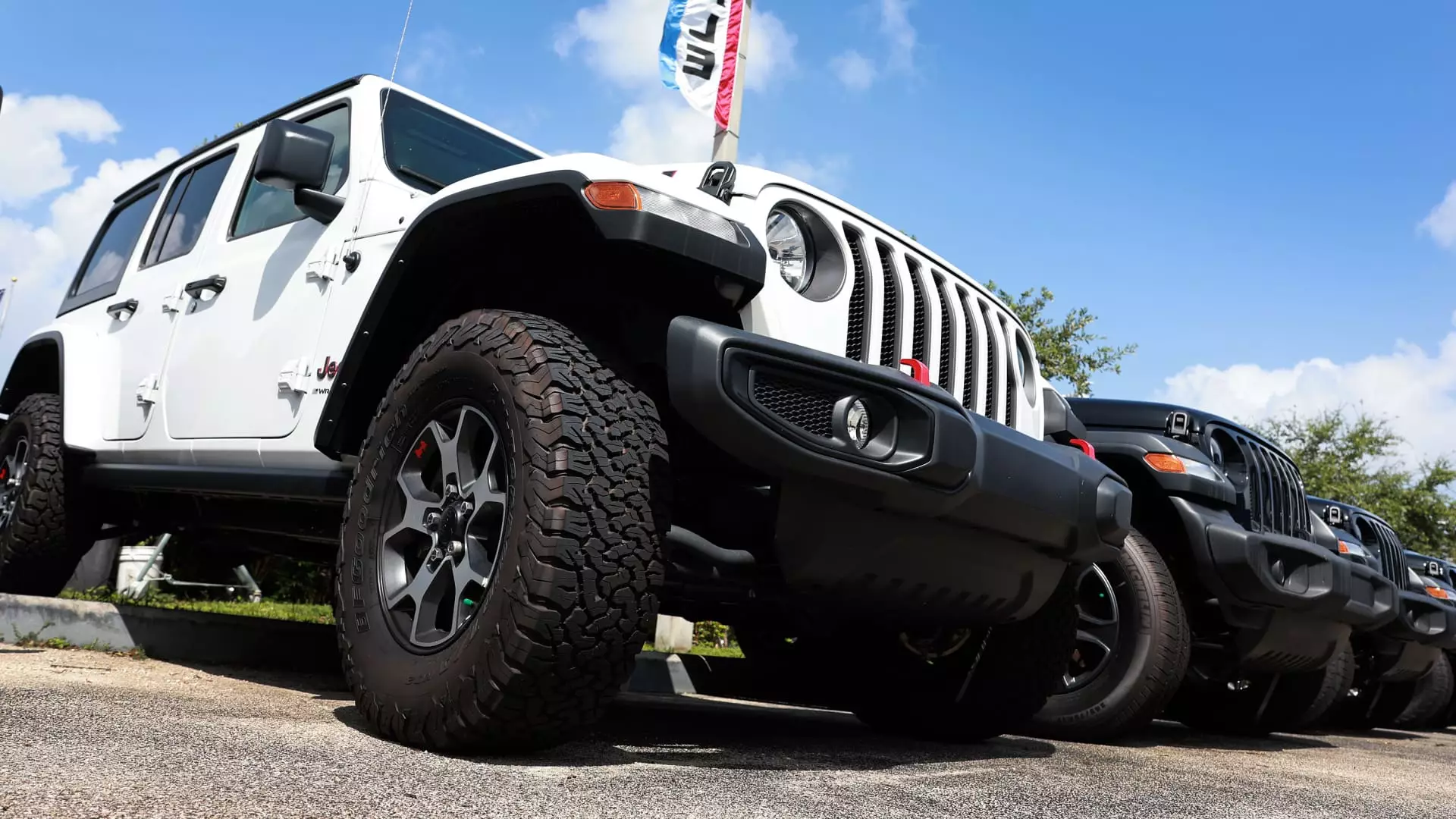As we delve into the third quarter of 2024, the landscape of the U.S. new vehicle market appears turbulent, characterized by a complex interplay of economic factors, political uncertainties, and evolving consumer behaviors. Analysts predict a dip in sales, forecasting approximately 3.9 million new vehicles sold—a decline of around 2% compared to the same period in 2023, and reflecting a more pronounced fall of 5% from the previous quarter. This fluctuation is largely attributed to rising interest rates, soaring vehicle prices, and a general aversion among consumers in the face of economic insecurity.
The Federal Reserve’s recent decision to cut interest rates has brought a glimmer of hope; however, experts assert that the reduction in rates alone may not be sufficient to stimulate a notable increase in sales for the remainder of the year. “2024 has been a volatile year for the new vehicle market, and more of the same is expected in Q4,” states Charlie Chesbrough, senior economist at Cox Automotive. This encapsulates the prevailing sentiment within the industry—a mix of cautious optimism paired with the recognition of deep-seated affordability issues hampering consumers’ purchasing decisions.
At the heart of the current market challenges lies the issue of affordability. Jessica Caldwell, head of insights at Edmunds, emphasizes that the average new vehicle financing amount has surged to $40,000, a staggering figure that many consumers find difficult to manage. This price point restricts access to new vehicles for a significant portion of the population, suggesting a growing divide between the buyers who can participate in the new car market and those who are priced out.
Adding to the complexity, the average transaction price for new vehicles remains steep at $47,870, despite a slight decrease over the past year. This figure, while lower than previous highs, is still significantly elevated compared to historical standards, highlighting the persistent pressure on consumers.
Divergent performance among auto manufacturers is another defining characteristic of this quarter. Companies like Honda and Ford are projected to experience sales growth, which starkly contrasts with the anticipated declines for others, specifically Stellantis, Toyota, and BMW. Stellantis, in particular, faces a challenging landscape, with projected sales potentially plummeting by as much as 21%. The prioritization of pricing and profitability over market share by CEO Carlos Tavares has raised eyebrows, especially as core brands like Jeep and Ram continue to struggle.
Electric vehicles (EVs) also present a mixed bag of developments. While the overall market for EVs is expected to grow by roughly 8% compared to last year, the leading EV manufacturer—Tesla—faces a slight downturn, with forecasts predicting a 2.4% reduction in sales. Moreover, Tesla’s market share, which has historically hovered around or above 50%, is anticipated to fall below that mark for the second consecutive quarter. This trend illustrates an evolving competitive landscape where traditional automakers are increasingly encroaching upon Tesla’s dominance.
Interestingly, the growth of the electric vehicle segment is buoyed significantly by government incentives, which have now reached an elevated average equivalent to 13.3% of the total transaction price. These incentives, including a federal credit of up to $7,500 for qualifying EV purchases, are making a substantial difference in encouraging buyers to consider electric alternatives. As the traditional automotive sector struggles with pricing pressures, these incentives serve as a powerful motivator, catalyzing increased adoption rates among consumers keen on transitioning to greener technologies.
Nevertheless, not all EVs qualify for this incentive, as the parameters can be restrictive, particularly for models that are leased rather than purchased outright.
Despite the challenges that loom over the new vehicle market, there are signs of cautious optimism for 2024. Both Edmunds and Cox are predicting a total of about 15.7 million light-duty vehicle sales next year. While this reflects a downward revision from Cox’s initial forecast of 16 million, it underscores an expectation of gradual recovery as affordability conditions improve and consumer confidence potentially rebounds.
Ultimately, navigating the complexities of the new vehicle market in the coming quarters will require adaptability and strategic innovation among manufacturers, alongside supportive economic policies aimed at fostering consumer readiness. As we step into Q4 and beyond, the dynamics of affordability, shifting consumer preferences, and evolving market strategies will be critical in determining the trajectory of the automotive industry.

